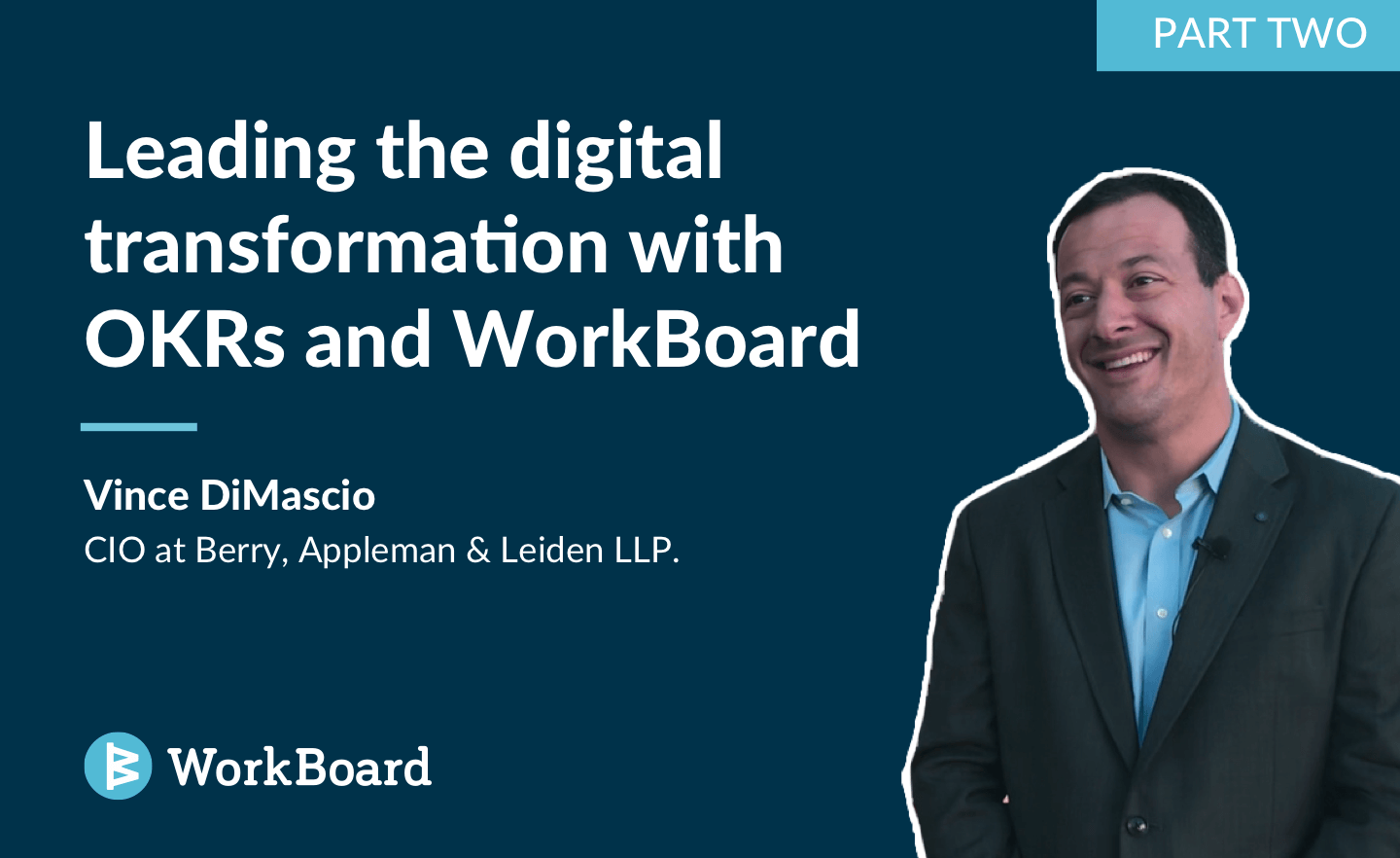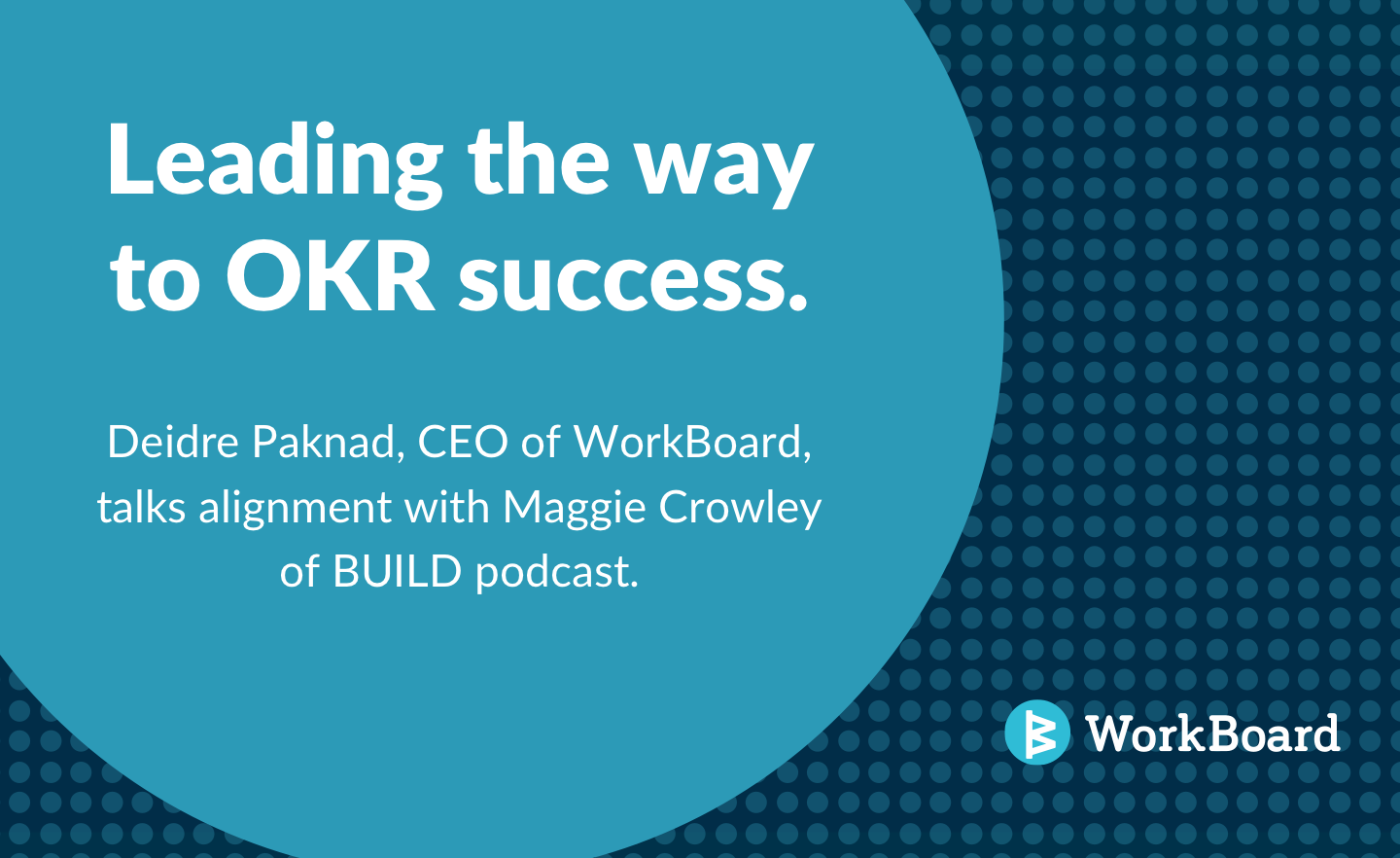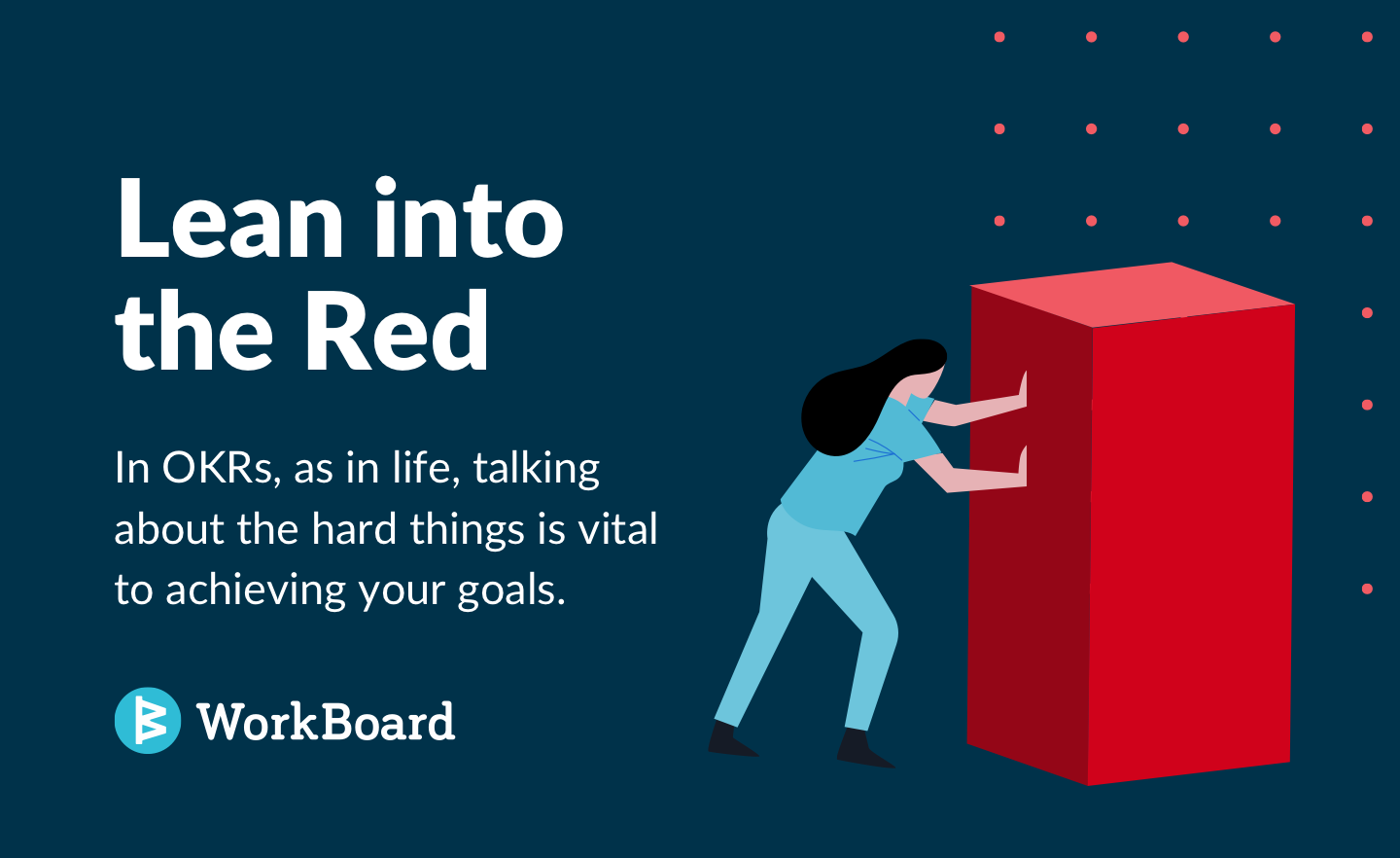
Editor’s note: this is the second of two blogs that detail Vince DiMascio’s OKR Journey at BAL. Please click here to read the first blog.
Building shared consciousness
Shared consciousness happens when you get to a point where almost anyone in your organization can be trusted to make decisions on their own because they have the same information and the same objective that you do.
So many of us entering or operating in organizations that are structured and have an environment that’s ten years old can see it — these structures and silos of functional expertise and complicated processes were built to get something to scale, to tweak the efficiencies of it and do one thing really well. But transformation is about reshaping the business to the new environment where what was is not as valuable. And for that transformation to happen, you’ve got to have people who can do the work and immediately know exactly what to do and how to make those decisions on the front lines autonomously.
Avoiding micromanagement
Central micromanagement — central command and control — can't work. It's impossible in today's environment. And so you need to enable your people who are close to the point of action to understand the big picture without checking in so they can just execute, do what they love, do what they're hired to do, and be engaged.
It's our job as leaders to get the right information flows open and get the right direction distributed throughout the organization. Provide a simple, clear, common mission and then make sure the culture's right to sustain that, so your people can make the right decisions immediately. That combination of information flow, autonomy, and empowerment is the key to what we've done. Everything that we can declare as a success in this organization is due to the critical shared consciousness OKRs and WorkBoard gave us.
Autonomy and direction is the key point. This is an issue just based on my experience, and when I talk with other people using OKRs at other organizations, they tell me, “We have the tools to centralize decision-making like never before, but it doesn't work; things are moving too fast.” So when you adopt OKRs, don't go back to a direct top-down approach of, here's what we need to do specifically, and then have it roll down in a very direct and specific, almost automated micromanagement way.
Moving toward empowering autonomy
You need to go in the opposite direction. You need to empower leaders to develop the plan for whatever the course of action is on their own. Plans tend to work better when the people who need to execute them draw them up. And that happens for good reason. Those people — especially when you're on the edge of innovation with new systems, new technologies, new business ideas — almost always know better than you do as a leader. They know the lay of the land better, the specific technical or business matter better, and may see the changes on the ground before you possibly can.
You've got to take the opposite approach and not bring it to the top person. Instead, tell everyone what you want to achieve. Tell them the mission, let them make the plan, let them make decisions, and let them act. Let them come to you for resources and direction. Continue to beat the drum and get the story right, so people understand where they fit and how the work they're doing lines directly up to what matters.
People will rise to the challenge, even for the most ambitious work. You only use OKRs if you want to direct your people toward desired outcomes, not to control their activities. This was the only way for us to move at this speed with our size and resources and to make that kind of impact. That's the root of all of it for us at BAL — you need the right process and the right technology to make it work.
Motivating with trust
When we talk about transformation, it's important to recognize the obvious point that transformation without people will fail. Getting on the road to continuous evolution starts with relationships and motivating your people with things like trust, the right incentives, psychological safety, a common purpose, etc. So, first and foremost, every employee needs to understand the organization's cause and their costs — that gives them a connection to the higher purpose.
OKRs give you the focus and the capacity to work very hard in a disciplined, dedicated way to pursue mastery in the areas that matter most. This mastery, especially on the technology front, pays huge dividends back and provides engagement in a way that generates this virtuous cycle that makes you ready for anything with your team. The most powerful motivator is the feeling that your work contributes to this larger purpose, that what you're doing matters.
And that’s what OKRs do: they connect each person's work directly to the top-level vision that provides that source of motivation. So this ties directly to the science of motivating people and promoting and providing a healthy culture of high performance, which is what you need more than anything else for a transformation agenda.
Checking in with yourself
Ultimately, OKRs are a strategic planning process. There's really no magic to them. Their beauty is in their simplicity. So, if it's not working, check in with yourself before you start to think about there being a problem with your team, the process, or the technology.
Did you deploy it with the right span, with the right depth to the right scope? Do your people have the support they need? Do they have enough to understand how to change these habits right away, especially when you're trying to do it in a compressed time frame? Were you clear about the lines between systems and processes? Of how systems fit together or what you can do to make them fit? What do you do if you have competing systems where there's potential redundancy? And is your vision clear? Does it link to the higher purpose? Check those basics before you really start trying to investigate these potentially external issues.
You're going to be stepping back from it and looking at lead measures to try and build out the actual change you’re after. This could be tough to communicate well, but there's definitely a distinction there, and my advice is to reach out to experts for getting that message right — lest you indicate to somebody that their role is not important or that they don't belong in the OKR system, etc.
Securing OKR coaching
OKRs aren't about activity tracking. You can have results that aren't key results. There's an important distinction between BAU metrics and OKRs. The distinction is that if you want to transform how you're doing an operation or achieve a step-change in the operational performance in a certain area, you can take an operational metric and turn it into an OKR.
Hire or contract a committed, determined OKR champion (or however many you need to scale and support your organization). Coaches play a critical role in getting this right. Make sure that people understand that that person is empowered and is, in many ways, an agent of yours with regard to the executive priorities and the firm's goals.
We have OKR coaches now in our various departments and we have an OKR advisor on our operational excellence team. Before we had that, we leveraged the WorkBoard services to cover it. And you just can't do without it because these are habit changes — people are going to struggle with it.
The coaching is also an OKR team role, so I strongly recommend getting coaching services from WorkBoard beyond the champion role. These teams have a broad range of insights and can bring such an acceleration to your program that it's worth its weight in gold. The amount of strategic clarity that I was able to gain just from sitting down with a whiteboard and the WorkBoard team before I presented this brand new strategy was critical to my success in clarifying the vision and lining things up.









